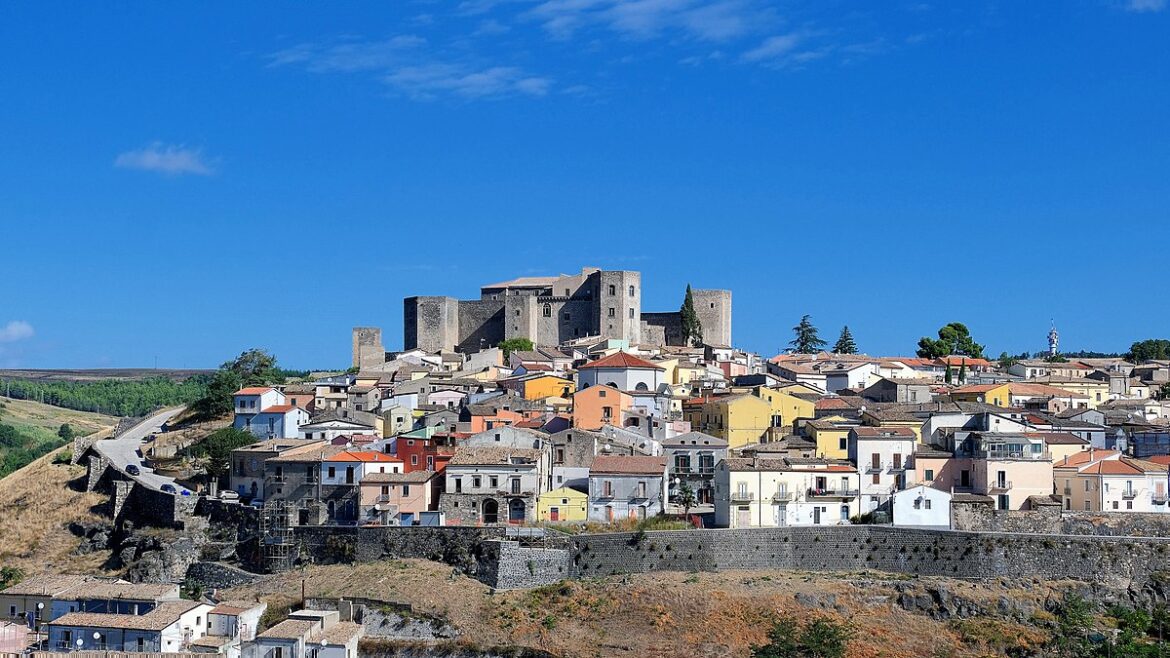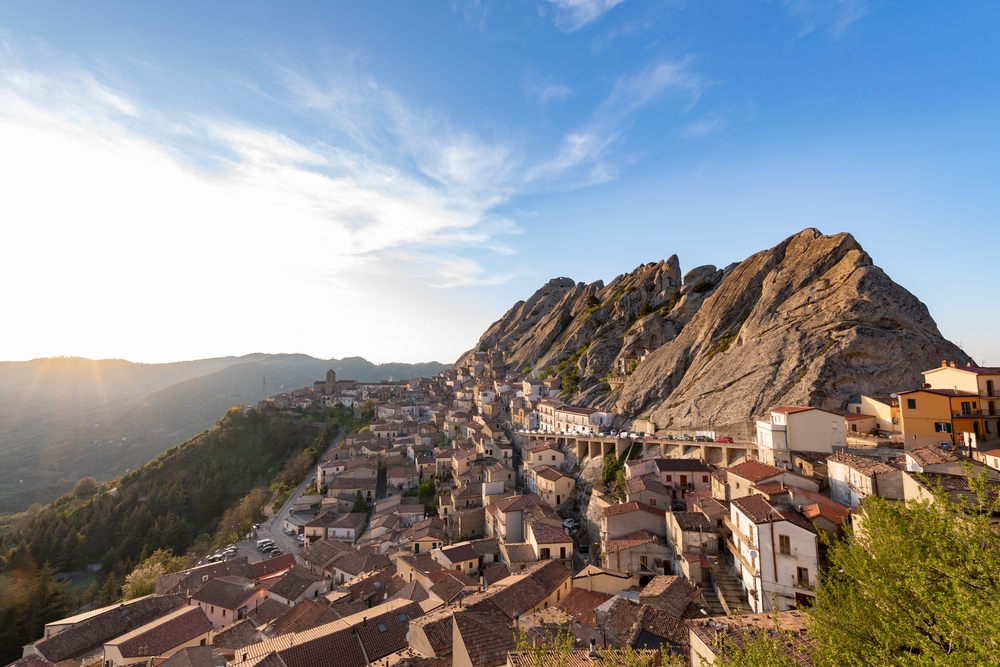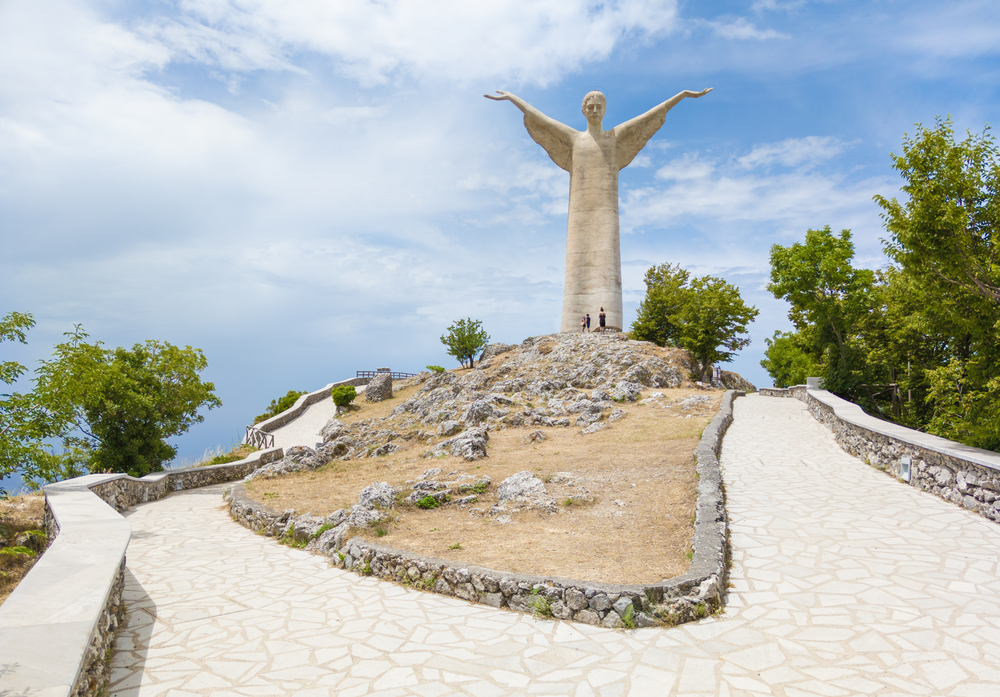Basilicata is a magical region, steeped in history, nature and washed by two seas, but only in recent years has it seen an increase in the number of tourists, while not becoming as chaotic as other mass tourism destinations. This, too, makes spending time in Lucania special, giving us the chance to experience first-hand the lives of the people who inhabit these places and the traditions that still endure today.
October weekend in an electric car on the roads of Basilicata
Reaching Basilicata by electric car is certainly a winning choice, considering the absence of an international airport and the incomplete coverage by the rail system. Arriving with a battery-powered car you can decide whether to go via Campania or Puglia, taking advantage of the Plenitude+Be Charge network present in both regions.
Day 1: Venosa and Melfi
Venosa
Once in Venosa, we immediately stop at a pastry shop for a coffee paired with a typical sweet, the pizzicannelli. Supposedly founded by the Greek hero Diomedes after the Trojan War and the birthplace of the famous Roman poet Horace, the town owes its name to a dedication to the Goddess of Love, Aphrodite (Venus for the Romans, in Latin Venus) and is part of the association of Italy’s Most Beautiful Villages.
Venosa’s main attraction is its Aragonese Castle, built in the 15th century by Duke Pirro del Balzo, which today houses the National Archaeological Museum. In the museum, you can admire artefacts from Roman times to Norman times.
If you cannot visit the castle, even a simple walk will be pleasant: you will come across a beautiful cathedral, the remains of the Roman walls, an amphitheatre and the Baroque church of San Filippo Neri. You can also walk around the impressive monastic complex of the Abbey of the Holy Trinity with old and new churches, mosaics, frescoes and tombs to admire.
We stop for lunch, when we are literally spoilt for choice. Among the dishes to choose from we find: lagane e ceci, cavatelli with turnip tops with sauce and meat, penne with pumpkin mole and peeled tomatoes, and baccalà (salt cod) with cruschi peppers. Let’s wash it all down with a drop of Aglianico del Vulture, a DOC wine appreciated all over the world.

Melfi
In the afternoon we move on to nearby Melfi. Here too you can visit an imposing castle, one of the most important in the whole of southern Italy, dating back to the Middle Ages. However, until 50 years ago this was privately owned.
Once the visit is over, we take a stroll through the historic centre before moving on to a cosy trattoria for a dinner of maccaronata with lamb sauce. We stay in town for the night.
If you manage to visit Melfi on 22 and 23 October, you can experience the chestnut festival, a very popular event in the area, where you can taste various chestnut dishes (including lasagne made with chestnut flour) and accompany them with excellent local wine.

Day 2: Potenza and Maratea
Potenza
Our electric car journey in Basilicata continues towards Potenza, the capital of the southern region.
Situated about 800 metres above sea level, Potenza is the most populous city in Basilicata and the highest located regional capital in Italy. An ancient Lucanian settlement crossed by the Basento river and enclosed by mountains, the city owes its name to the conquest by the Romans, who forcibly imposed their supremacy, the ‘Potentia Romanorum’ (the power of the Romans).
We begin our tour of the town from its main square, Piazza Matteotti, overlooked by the Town Hall, once a meeting place for the people in Angevin times. On the south side of the square stands the Temple of San Gerardo, which houses the statue of the city’s patron saint.
We continue strolling along the famous and lively Via Pretoria, full of shops and restaurants, which widens to the central Piazza Mario Pagano, home to the 19th-century prefecture building and the Teatro Stabile, built in the mid-19th century.
Finally, we reach the Cathedral of San Gerardo. Built in the 13th century and dedicated to the town’s patron saint, it was originally a Romanesque basilica with three naves but was transformed into a neoclassical building, with simple and sober lines, at the end of the 18th century, while retaining its 13th-century portal surmounted by an elegant tympanum.
If you happen to visit Potenza in May, don’t miss the events of May Potentino, a festival of activities organised in conjunction with the festivities in honour of the patron saint. Characteristic events include the classic Parade of the Turks, in costume, followed by the Palio dei Cavalli. Evenings are also held in the old town centre with live local popular music, tasting of typical products and local wines.
For lunch, we try to stay light with a focaccia alla lucana made from semolina to return to the car in the direction of Maratea.

Maratea
Maratea is a small town on top of a small promontory known as La Timpa. Over the years, the area has become an important tourist destination, thanks to its beautiful beaches and its main attraction: the world’s second largest statue of Christ the Redeemer, second only to the iconic monument in Sao Paulo, Brazil.
Having arrived in the city, we decide to visit the imposing bust: by car, you can drive to the car park on the road a short distance from the destination, and then continue on foot or by shuttle bus. The site is open 24 hours a day: visiting it at night could have its own charm.
By day, beyond the grandeur of the Christ, what is striking is the view from Monte San Biagio. Among many, there is a question that many pilgrims might ask themselves: how come the statue has its back to the sea? It is probably turned towards the people to convey the idea of welcoming the faithful.
Other places of interest are the Basilica of S. Biagio, which is a dedication to the city’s patron saint, the church of the Immacolata and the church of Santa Maria Maggiore. Visiting Maratea in summer, of course, gives the possibility of various sea- and beach-related activities, but the magic of the place out of season is remarkable.
Our tour of Basilicata by electric car continues in the direction of Laino borgo. In the small town, we dine on fish and leave the car in charge at the Plenitude+Be Charge column. We spend the night in a cosy bed and breakfast.

Day 3: Matera and come home
Matera
We wake up full, in every sense of the word, thanks in part to a breakfast of chinulidd, typical Lucanian calzoncelli made from chestnuts.
After more than two hours of driving, we arrive in Matera, the famous city of stones. Thanks in part to its election as Capital of Culture in 2019, the beautiful town has experienced and continues to experience great and well-deserved success among tourists.
Why is Matera called the city of stones? It owes this name to the fact that the city is made up of two large boulders – Barisano and Caveoso – in which caves have been excavated to house houses, hotels, restaurants, shops, cafés, art galleries and museums. Matera also has a third part: Civita, the town, which develops in the central part between the two large boulders.
The caves of Matera have been inhabited for centuries, some were humble residences and others more elegant, but by the beginning of the 20th century the area had become synonymous with poverty. The poor sanitary conditions became a national scandal and eventually the cave dwellers were relocated – by law – to modern buildings on the plateau above.
In the 1980s, people began to realise the potential of the old abandoned caves, and many began to renovate them. In 1993, the town was declared a UNESCO World Heritage Site, for being ‘the most exceptional and intact example of a troglodyte settlement in the Mediterranean region, perfectly adapted to its terrain and ecosystem’.
Because of its unique conformation, Matera was one of the filming locations for Mel Gibson’s The Passion of the Christ: in the film, shots showing the stones and the gorge below can be seen.
A visit here cannot be considered as such without a guided tour of the caves. There is something for everyone, but it is definitely the best way to get an idea of the living conditions of the inhabitants of these special cave dwellings.
Once the tour is over, we move on to the town centre, the oldest part of the village, built on the edge of a bare plateau. This is where the town cathedral now stands and a centre similar to many other Italian towns.
In Matera and throughout this part of southern Italy, there are numerous churches carved into the rock. These rock-hewn churches were mostly created by Basilian monks fleeing the iconoclastic persecutions of the Byzantine Empire during the 8th and 9th centuries.
It is worth visiting one or two of these evocative ancient places of worship. One of the most beautiful churches in Matera, however, is not a rock church. San Pietro Caveoso is built in a picturesque place on a rocky spur above the ravine, and is a charming little building with a cosy atmosphere, simple folk art decorations and depictions of saints.
In Matera, as in the rest of Basilicata, there would still be plenty to see, but our electric car trip came to an end. After a lunch of orecchiette alla materana we get back into the car in the direction of Bari: on the way we will find more Plenitude+Be Charge columns to recharge the car.









